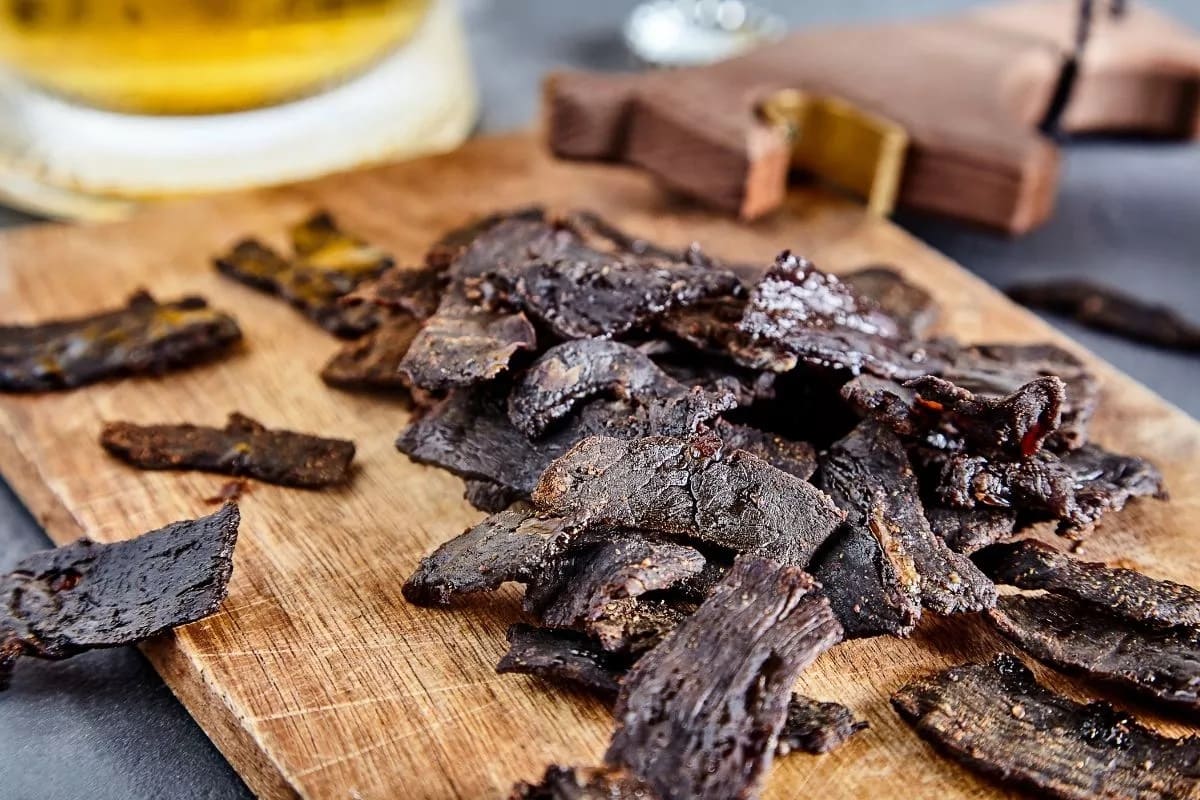

Articles
How To Store Jerky After Dehydrating
Modified: January 9, 2024
Discover the best ways to store jerky after dehydrating with these helpful articles. Ensure your beef, turkey, or venison jerky stays fresh and delicious for longer.
(Many of the links in this article redirect to a specific reviewed product. Your purchase of these products through affiliate links helps to generate commission for Storables.com, at no extra cost. Learn more)
Introduction
Jerky is a beloved snack that has been enjoyed for centuries. Whether you’ve made it yourself or bought it from a store, properly storing jerky is essential to maintain its freshness and flavor. Improper storage can lead to spoilage or a loss of quality, resulting in a disappointing snacking experience. In this article, we will explore the different methods of storing jerky after dehydrating to ensure its longevity and tastiness.
Understanding the shelf life of jerky is crucial when it comes to storing it. Jerky is a dehydrated meat product that has been preserved through a drying process. This removal of moisture helps to inhibit microbial growth and spoilage. However, jerky is not completely impervious to spoilage, and its shelf life can vary depending on several factors, including the type of meat, the seasoning used, and the storage conditions.
Choosing the right storage container for your jerky is an important step in maintaining its quality. The container should be airtight and able to keep out moisture and air, which can contribute to the growth of bacteria. Glass jars with tight-fitting lids or food-grade plastic containers are good options. Avoid using containers that allow light to penetrate, as this can lead to oxidation and loss of flavor.
Properly packaging your jerky is another crucial aspect of storing it effectively. There are several methods you can utilize:
- Storing jerky in airtight containers
- Using ziplock bags for jerky storage
- Vacuum sealing jerky for longer shelf life
- Freezing jerky for extended storage
Let’s explore each of these methods in detail and learn some tips for safely storing jerky to prolong its shelf life and preserve its delicious taste.
Key Takeaways:
- Properly storing jerky in airtight containers, ziplock bags, or vacuum-sealed bags helps maintain its freshness and protect it from spoilage, ensuring a delicious snack for an extended period.
- Freezing jerky can extend its shelf life, but be cautious of texture changes after thawing. Follow safety guidelines, including inspecting jerky for freshness and practicing proper hygiene.
Read more: How To Make Chicken Jerky In A Dehydrator
Understanding the Shelf Life of Jerky
Before diving into the different storage methods, it’s important to have a basic understanding of the shelf life of jerky. While jerky has a longer shelf life compared to fresh meat, it is not completely immune to spoilage. The shelf life of jerky can vary depending on several factors.
The type of meat used for making jerky is an important factor to consider. Lean meats, such as beef or turkey, tend to have a longer shelf life compared to fattier meats like pork or lamb. This is because fat can turn rancid more quickly, reducing the overall shelf life of the jerky.
The seasoning and additives used in the jerky can also affect its shelf life. Salt, spices, and preservatives can help extend the shelf life by inhibiting bacterial growth. It’s important to read the label or recipe to understand if any preservatives or additives have been used in the jerky.
Storage conditions play a vital role in determining how long your jerky will last. Ideally, jerky should be stored in a cool, dry place away from direct sunlight and humidity. Exposure to heat, moisture, or sunlight can accelerate spoilage and affect the taste and texture of the jerky.
It’s important to note that homemade jerky may have a shorter shelf life compared to commercially packaged jerky. Commercially-made jerky often undergoes additional processing and packaging techniques to ensure a longer shelf life. However, with proper storage methods, homemade jerky can still last for several weeks or even months.
By understanding these factors, you can better assess the freshness and quality of your jerky. Now that we have a grasp on the shelf life of jerky, let’s explore the various storage methods to preserve its flavor and texture.
Choosing the Right Storage Container
When it comes to storing jerky, choosing the right storage container is crucial in maintaining its freshness. The ideal container should be airtight, preventing moisture and air from entering and causing spoilage. Here are some options to consider:
Glass Jars: Glass jars with tight-fitting lids are a popular choice for storing jerky. They provide an airtight seal, keeping out moisture and air. Clear glass jars allow you to easily see the contents and monitor the condition of the jerky. It’s important to choose jars made of food-grade glass to ensure there are no additives that could potentially affect the quality of the jerky.
Food-Grade Plastic Containers: Food-grade plastic containers with airtight lids are another viable option for jerky storage. Look for containers that are specifically designed for food storage and are BPA-free. These containers are lightweight, durable, and easy to handle. Opt for containers with a tight seal to prevent air and moisture from entering.
Resealable Bags: Resealable bags, such as Ziplock bags, are convenient for storing small portions of jerky. These bags are made from thick, food-grade plastic and have airtight seals to maintain freshness. They are also lightweight and easy to transport, making them great for on-the-go snacking. However, they may not offer as much protection against light and potential punctures as other containers.
It’s important to choose a container that suits your needs and preferences. Consider the size of your jerky batches and the frequency of snacking when selecting the container size. Additionally, ensure that the chosen container is clean and thoroughly dry before storing the jerky to prevent moisture build-up and mold.
Avoid using containers that are prone to rust, as they can transfer metallic flavors to the jerky. Similarly, containers that allow light to penetrate can lead to oxidation and loss of flavor. Dark-colored containers or containers stored in a dark pantry or cupboard can help mitigate this issue.
By choosing the right storage container, you can provide a safe and optimal environment for your jerky, allowing it to stay fresh and flavorful for an extended period.
Properly Packaging Jerky
Proper packaging is essential for preserving the quality and freshness of your jerky. It not only helps to protect the jerky from moisture, air, and light but also prevents it from drying out further. Here are some effective packaging methods to consider:
- Storing Jerky in Airtight Containers: Once your jerky is completely cooled, transfer it to airtight containers. Glass jars or food-grade plastic containers with tight-fitting lids work well for this purpose. Make sure to fill the container as much as possible to minimize the presence of air, which can lead to oxidation and spoilage. Label the containers with the date of storage to keep track of freshness.
- Using Ziplock Bags for Jerky Storage: Ziplock bags are a convenient option for storing jerky, especially in smaller portions. Place the jerky inside the bag and press out any excess air before sealing it tightly. Consider double-bagging for added protection against oxygen and moisture. Remember to squeeze out as much air as possible to extend the shelf life of the jerky.
- Vacuum Sealing Jerky for Longer Shelf Life: Vacuum sealing is a highly effective method for extending the shelf life of jerky. This method removes air from the packaging, reducing the risk of oxidation and microbial growth. Using a vacuum sealer, place the jerky in designated bags and vacuum seal them. This process removes the air and creates an airtight seal that helps preserve the jerky’s flavor and texture for an extended period.
- Freezing Jerky for Extended Storage: If you want to store jerky for an even longer period, freezing is an excellent option. Wrap the jerky tightly in plastic wrap or aluminum foil to prevent freezer burn and place it in a freezer-safe bag or container. Freezing can help preserve the jerky for several months. Before consuming, allow the jerky to thaw in the refrigerator or at room temperature.
Regardless of the packaging method you choose, make sure to remove as much air as possible and keep the jerky in a cool, dry place away from direct sunlight. Remember to label the packages with the date of storage, so you can keep track of the freshness of your stored jerky.
By properly packaging your jerky, you can prolong its shelf life and ensure that it retains its taste, texture, and nutritional value.
Storing Jerky in Airtight Containers
One of the most popular methods for storing jerky is by using airtight containers. These containers provide a secure and sealed environment that helps to preserve the freshness and flavor of the jerky. Here’s how to store jerky in airtight containers:
- Prepare the Jerky: Ensure that your homemade or store-bought jerky is completely cooled before storing it. If there is any residual moisture, it can lead to mold growth or spoilage.
- Choose Suitable Containers: Select glass jars or food-grade plastic containers with tight-fitting lids. Make sure that the containers are clean, dry, and free from any residue that could affect the quality of the jerky.
- Fill the Containers: Pack the jerky into the containers, leaving some headspace at the top. This will allow for expansion and help prevent the jerky from getting crushed. Be careful not to overcrowd the container to ensure proper airflow between the pieces of jerky.
- Create an Airtight Seal: Once the jerky is inside the container, seal it tightly to create an airtight environment. Ensure that the lid is secured properly to keep out moisture and air.
- Label and Store: Label the containers with the date of storage to keep track of freshness. Store the containers in a cool, dry place away from direct sunlight and humidity. A pantry or cupboard is an ideal spot.
Storing jerky in airtight containers helps to protect it from moisture, air, and light, which can negatively impact its quality. The airtight seal prevents the jerky from absorbing unwanted flavors or odors from its surroundings. It also helps to maintain the jerky’s texture and taste for an extended period.
When you’re ready to enjoy your stored jerky, simply remove the desired amount from the container. Reseal the container tightly to maintain the freshness of the remaining jerky. Remember to consume the opened jerky within a reasonable time to ensure optimal taste and quality.
Storing jerky in airtight containers is a reliable method to keep your beloved snack fresh and delicious for a longer period. Give it a try and enjoy the convenience of having flavorful jerky readily available whenever you crave a protein-packed treat.
Store jerky in an airtight container or resealable plastic bag to keep it fresh. You can also use vacuum-sealed bags for longer shelf life. Keep it in a cool, dry place away from direct sunlight.
Read more: How To Make Bacon Jerky In A Dehydrator
Using Ziplock Bags for Jerky Storage
Ziplock bags are a convenient and effective option for storing jerky, especially when you want to portion it out or take it on the go. These airtight bags help to maintain the freshness and flavor of the jerky. Here’s how to properly store jerky using Ziplock bags:
- Cool the Jerky: Allow your homemade or store-bought jerky to cool completely before packaging it. This helps to prevent moisture buildup and potential spoilage.
- Select Quality Bags: Choose thick, food-grade Ziplock bags that are designed for food storage. The bags should be large enough to accommodate the desired amount of jerky.
- Portion and Seal: Place the jerky inside the bag, leaving some space at the top for sealing. If you are portioning out the jerky, divide it into individual servings or manageable amounts.
- Remove Excess Air: Squeeze out as much air as possible from the bag before sealing it. The less air present, the longer the jerky can retain its freshness and flavor. You can use the “burping” method, which involves pressing on the bag to push out the air while leaving a small opening to close the seal. Then, seal it completely.
- Label and Store: Label the bags with the date of storage to help keep track of freshness. Place the sealed bags in a cool, dry area away from direct sunlight and heat sources.
Using Ziplock bags for jerky storage offers several advantages. The bags are portable, lightweight, and can be easily transported for outdoor activities or on-the-go snacking. They are also transparent, allowing you to see the contents without needing to open the bag.
Remember to handle the bags with clean hands to minimize the risk of introducing contaminants. It’s also important to wash and thoroughly dry the bags before reusing them to prevent cross-contamination.
When you’re ready to enjoy your jerky, simply open the Ziplock bag, take out the desired amount, and reseal the bag tightly. This will help to maintain the freshness and prolong the shelf life of the remaining jerky.
Using Ziplock bags for jerky storage is a practical and reliable method, especially if you prefer portioned servings or need a convenient way to transport your favorite snack. Give it a try and experience the ease and convenience of storing jerky in Ziplock bags.
Vacuum Sealing Jerky for Longer Shelf Life
Vacuum sealing is a highly effective method for extending the shelf life of jerky. By removing the air from the packaging, you can significantly reduce the risk of oxidation, spoilage, and microbial growth. Here’s how to properly use a vacuum sealer for storing jerky:
- Cool and Flatten the Jerky: Allow your homemade or store-bought jerky to cool completely. Flatten the jerky strips to remove any excess air and create a more compact package.
- Select Quality Vacuum-Seal Bags: Choose high-quality vacuum-seal bags that are specifically designed for food storage. These bags are durable, puncture-resistant, and airtight.
- Fill and Seal the Bags: Place the flattened jerky strips inside the vacuum-seal bag, leaving some space at the top for sealing. Make sure to arrange the jerky in a single layer, avoiding any overlapping or crowding.
- Seal the Bag: Follow the instructions provided by your vacuum-sealing device to seal the bag. This process involves removing the air from the bag and creating an airtight seal to maintain freshness. Some vacuum sealers automatically seal the bag after removing the air, while others require manual sealing.
- Label and Store: Label the vacuum-sealed bags with the date of storage to keep track of freshness. Store the bags in a cool, dry area, away from direct sunlight and heat sources.
Vacuum sealing jerky helps to protect it from oxygen, which can cause oxidation and spoilage. By removing the air, you also create a more compact package, reducing the chances of the jerky getting crushed or damaged during storage.
When you’re ready to enjoy your jerky, simply open the vacuum-sealed bag, take out the desired amount, and reseal the bag using a vacuum sealer or by using the heat seal option, if available. Re-sealing the bag properly after each use will help to maintain the freshness and extend the shelf life of the remaining jerky.
It’s worth noting that vacuum-sealed jerky can have an extended shelf life of several months compared to other storage methods. However, always check for signs of spoilage, such as off smells, visible mold, or unusual texture, before consuming.
Using a vacuum sealer to store jerky is an excellent option if you want to maximize its shelf life and preserve its flavor and quality. Give it a try and enjoy the benefits of vacuum-sealed jerky for extended storage.
Freezing Jerky for Extended Storage
If you want to store jerky for an even longer period, freezing is an excellent method. Freezing jerky helps to preserve its freshness, flavor, and texture, allowing you to enjoy it months later. Here’s how to properly freeze jerky:
- Cool the Jerky: Allow your homemade or store-bought jerky to cool completely before freezing. This helps to prevent moisture buildup and potential freezer burn.
- Wrap the Jerky: Wrap the jerky tightly to protect it from freezer burn and to maintain its quality. You can use plastic wrap, aluminum foil, or freezer-safe bags for this purpose.
- Double-wrap for Added Protection: For optimal protection, consider double-wrapping the jerky. Start with a layer of plastic wrap or aluminum foil directly against the jerky to seal in the moisture. Then, place the wrapped jerky inside a freezer-safe bag or container.
- Label and Date: Label the wrapped jerky with the date of freezing to help keep track of its freshness. This is particularly important if you have different batches or flavors of jerky stored in the freezer.
- Store in the Freezer: Place the wrapped jerky in the freezer. Ensure that it is stored in a flat, stable position to prevent it from getting crushed or damaged.
Freezing jerky helps to halt the growth of bacteria and extends its shelf life significantly. However, while freezing can preserve the jerky for several months, it’s important to note that the texture may change slightly after thawing. Thawing the jerky gradually in the refrigerator can help minimize any texture changes.
When you’re ready to enjoy the frozen jerky, simply remove the desired amount from the freezer and allow it to thaw in the refrigerator. Avoid thawing the jerky at room temperature, as this can promote the growth of bacteria. Once thawed, the jerky can be enjoyed immediately or stored in an airtight container at room temperature for a short period.
By freezing jerky, you can have a stockpile of this delicious snack on hand for months to come. Whether you’re planning for long-term storage or would like to save some jerky for later use, freezing is an excellent option to ensure its extended freshness.
Tips for Safely Storing Jerky
Proper storage is essential to maintain the quality and safety of your jerky. Here are some additional tips and guidelines to ensure safe and effective storage:
- Inspect for Freshness: Before storing jerky, make sure it is fresh and free from any signs of spoilage. Check for off smells, mold, or discoloration, and discard any jerky that appears to be spoiled.
- Clean and Dry Hands: When handling jerky, always wash your hands thoroughly to prevent the transfer of bacteria or other contaminants. Dry your hands completely before touching the jerky or its storage containers.
- Keep Out of Direct Sunlight: Exposure to sunlight can accelerate spoilage and affect the quality of jerky. Store it in a cool, dry place away from direct sunlight and heat sources, such as a pantry or cupboard.
- Avoid Excessive Moisture: Moisture is one of the main factors that can lead to spoilage. Ensure the jerky is completely dry before storing it, and avoid storing it in environments with high humidity.
- Rotate Stock: To maintain freshness, practice first-in, first-out (FIFO) rotation. Place newly made or purchased jerky at the back of your storage area and use the older batches first.
- Seal Properly: Whether using airtight containers, Ziplock bags, vacuum-sealed bags, or freezer bags, ensure that all containers are sealed tightly to prevent air and moisture from entering.
- Monitor for Spoilage: Regularly inspect your stored jerky for any signs of spoilage. If you notice off smells, unusual textures, or mold growth, discard the jerky immediately.
- Consume Within a Reasonable Time: While properly stored jerky can have an extended shelf life, it’s best to consume it within a reasonable time for optimal flavor and quality. Follow the recommended storage times for homemade or store-bought jerky.
By following these tips and guidelines, you can ensure the safe and proper storage of your jerky. Not only will this help maintain its quality, but it will also provide you with a delicious and satisfying snack for an extended period.
Remember that the shelf life of jerky may vary depending on factors such as the type of meat, seasoning, and storage conditions. Always use your best judgment and rely on your senses to determine the freshness and safety of the jerky.
Read more: How To Make Pork Jerky With A Dehydrator
Conclusion
Properly storing jerky after dehydrating is crucial to maintain its freshness, flavor, and texture. By understanding the shelf life of jerky and following the correct storage methods, you can enjoy this tasty snack for an extended period. Here are the key takeaways from this article:
– Jerky is a dehydrated meat product that can last longer than fresh meat but is not immune to spoilage.
– Choosing the right storage container, such as airtight glass jars or food-grade plastic containers, is important to protect jerky from moisture and air.
– Properly packaging jerky in airtight containers, ziplock bags, or vacuum-sealed bags helps maintain its freshness and protect it from oxidation and spoilage.
– Freezing jerky can extend its shelf life even further, but be cautious of texture changes after thawing.
– Follow safety guidelines, including inspecting jerky for freshness, practicing proper hygiene, and monitoring for spoilage.
Remember to label your stored jerky with the date of storage and consume it within a reasonable time for the best taste and quality.
Whether you’re making homemade jerky or purchasing it from a store, proper storage techniques will ensure that you can savor the deliciousness of jerky whenever you crave it. So, follow these guidelines, store your jerky with care, and enjoy this versatile and satisfying snack at any time.
Frequently Asked Questions about How To Store Jerky After Dehydrating
Was this page helpful?
At Storables.com, we guarantee accurate and reliable information. Our content, validated by Expert Board Contributors, is crafted following stringent Editorial Policies. We're committed to providing you with well-researched, expert-backed insights for all your informational needs.
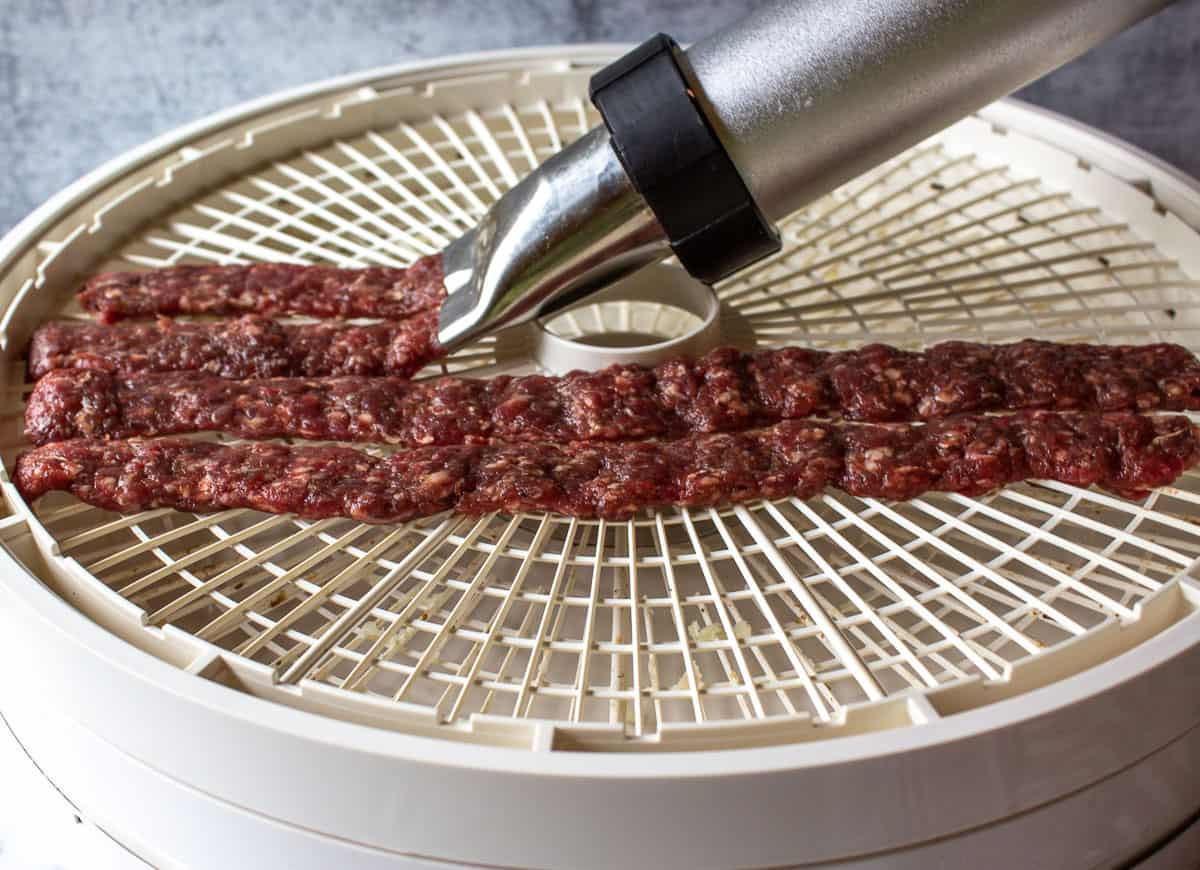
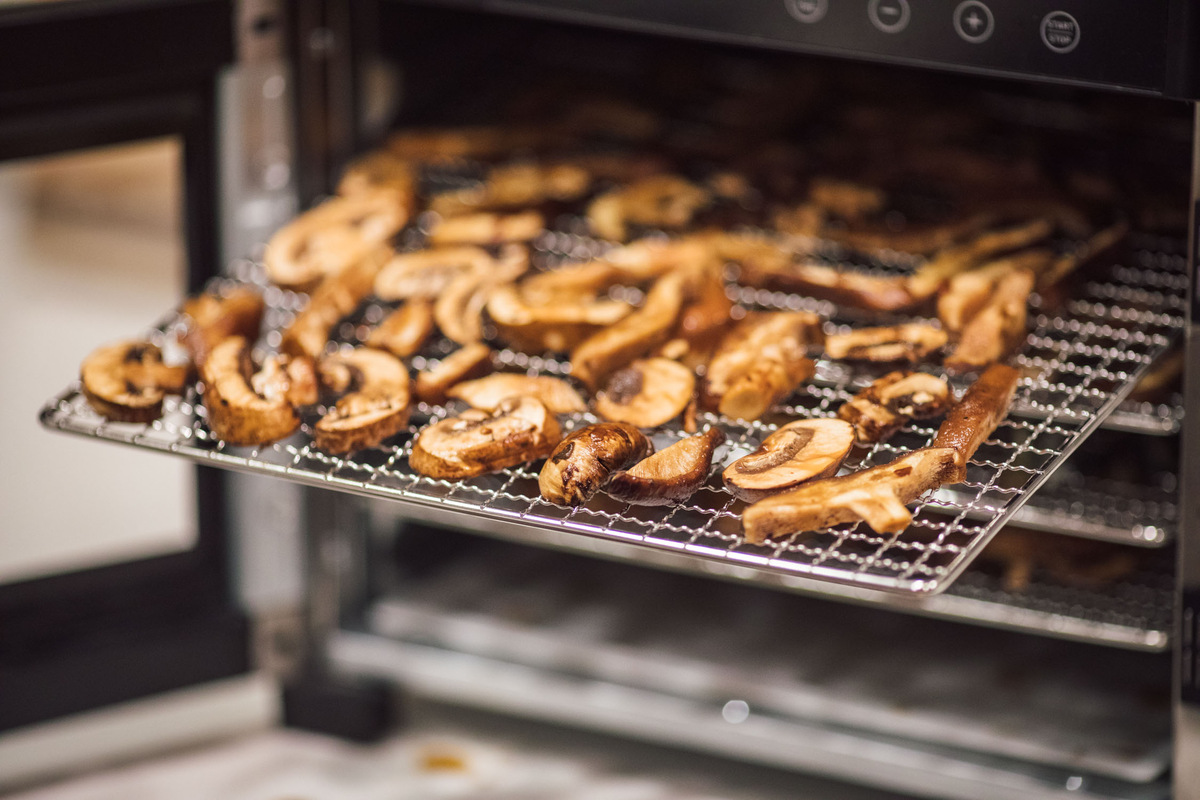
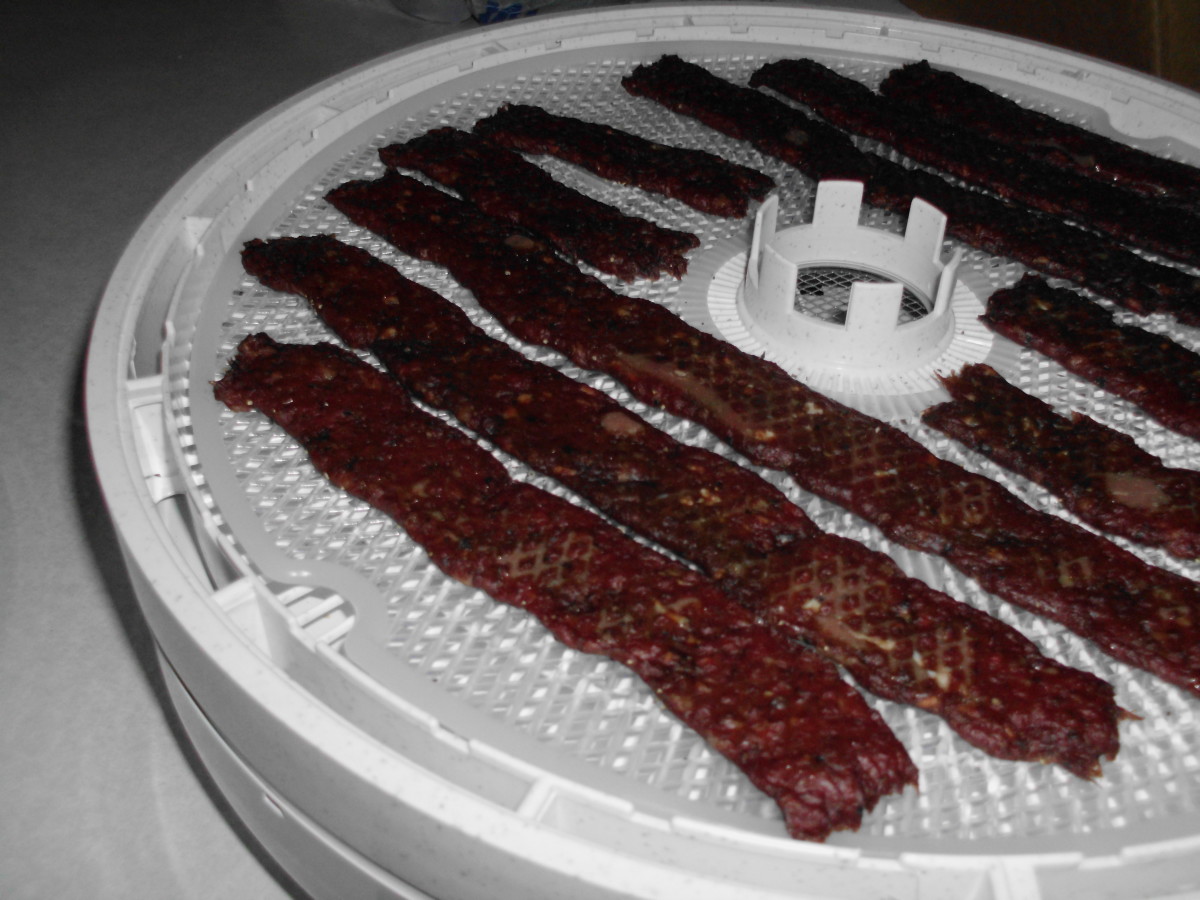
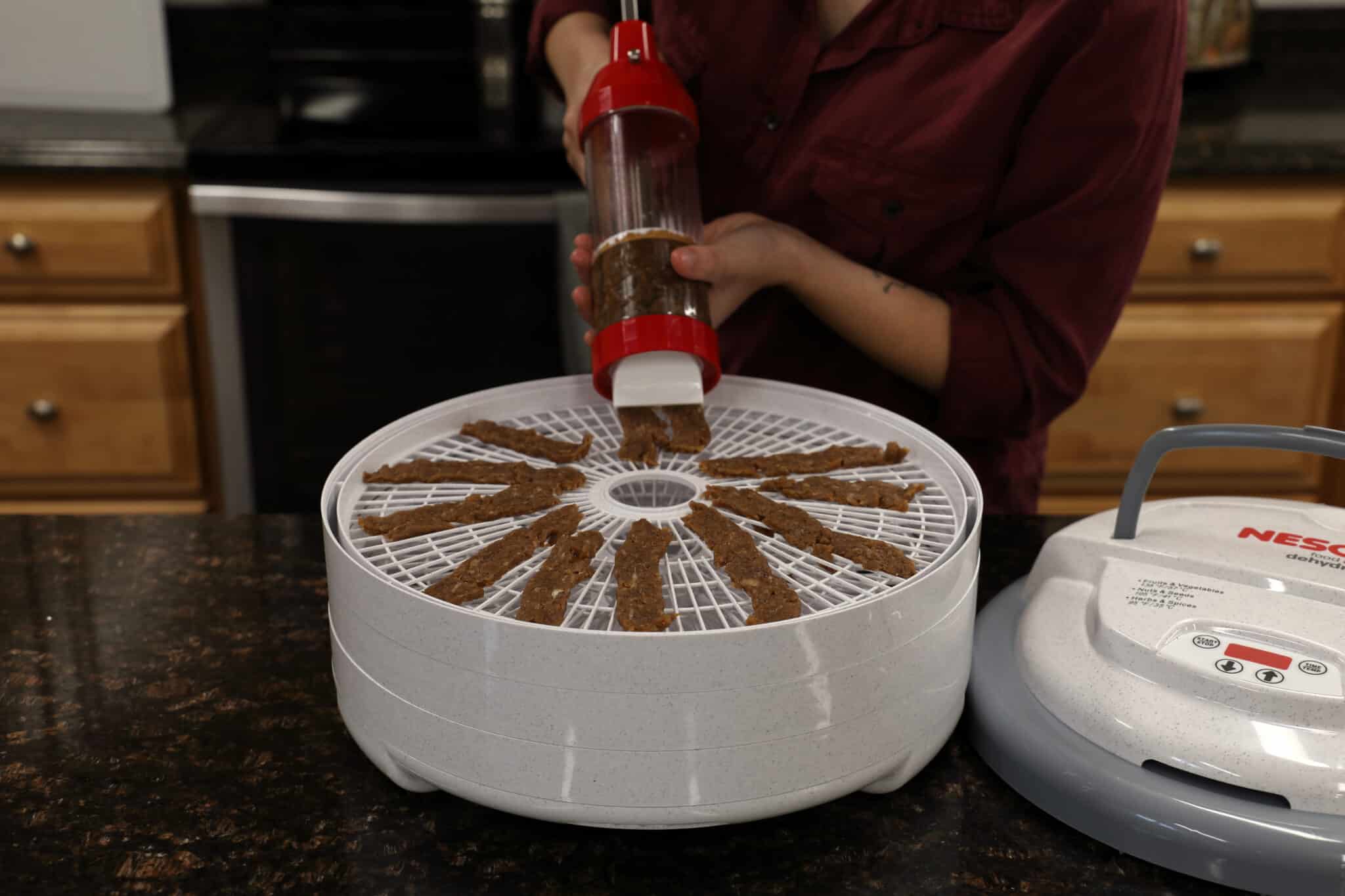
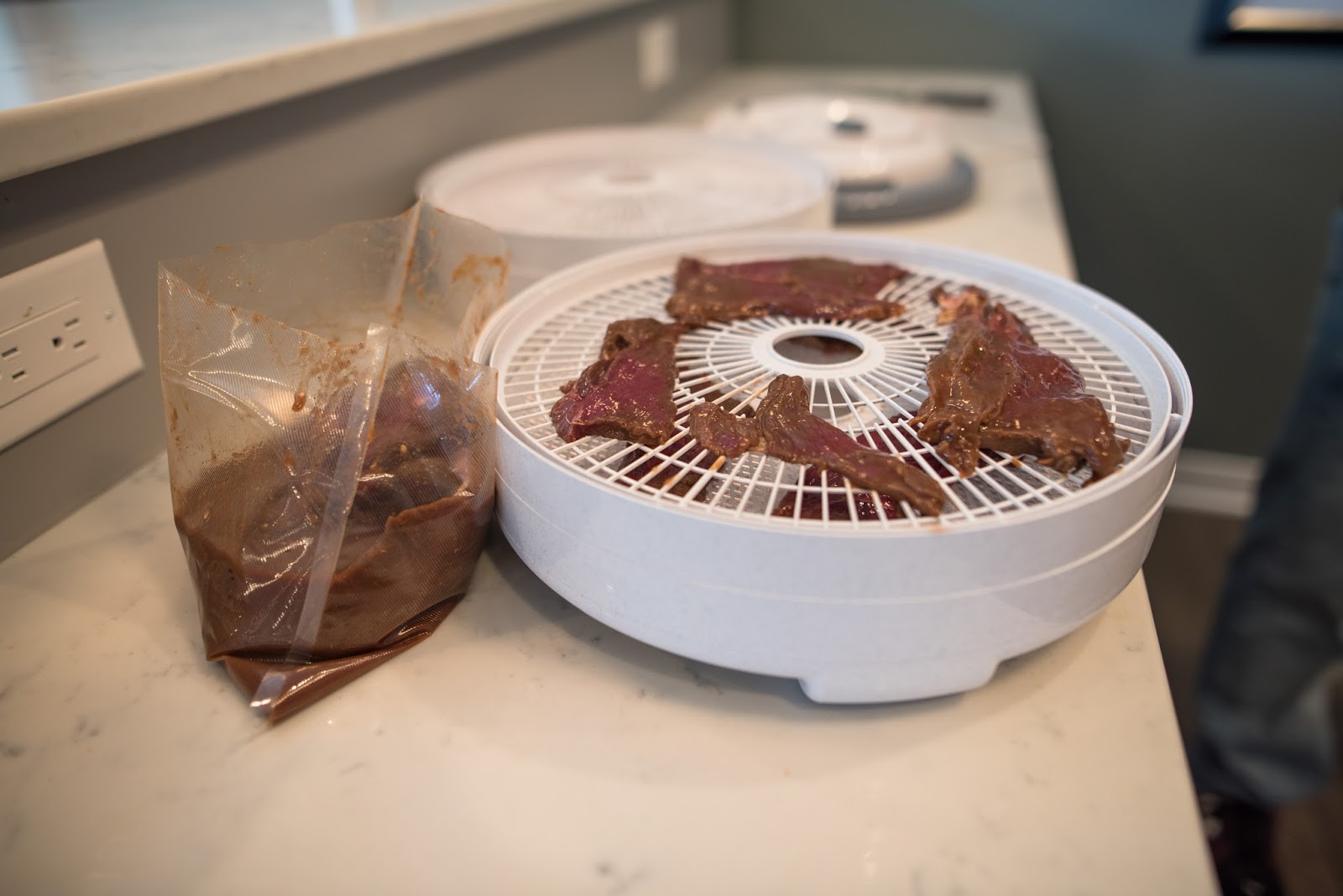
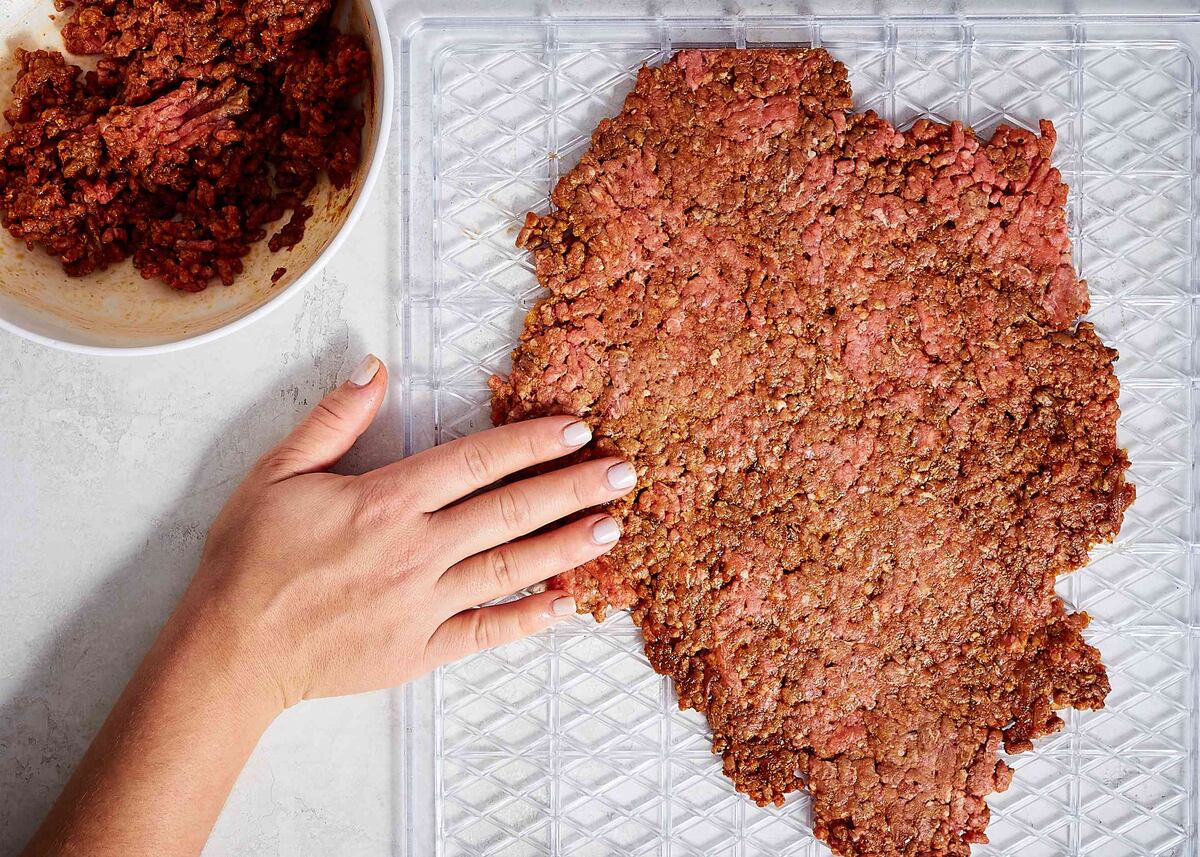
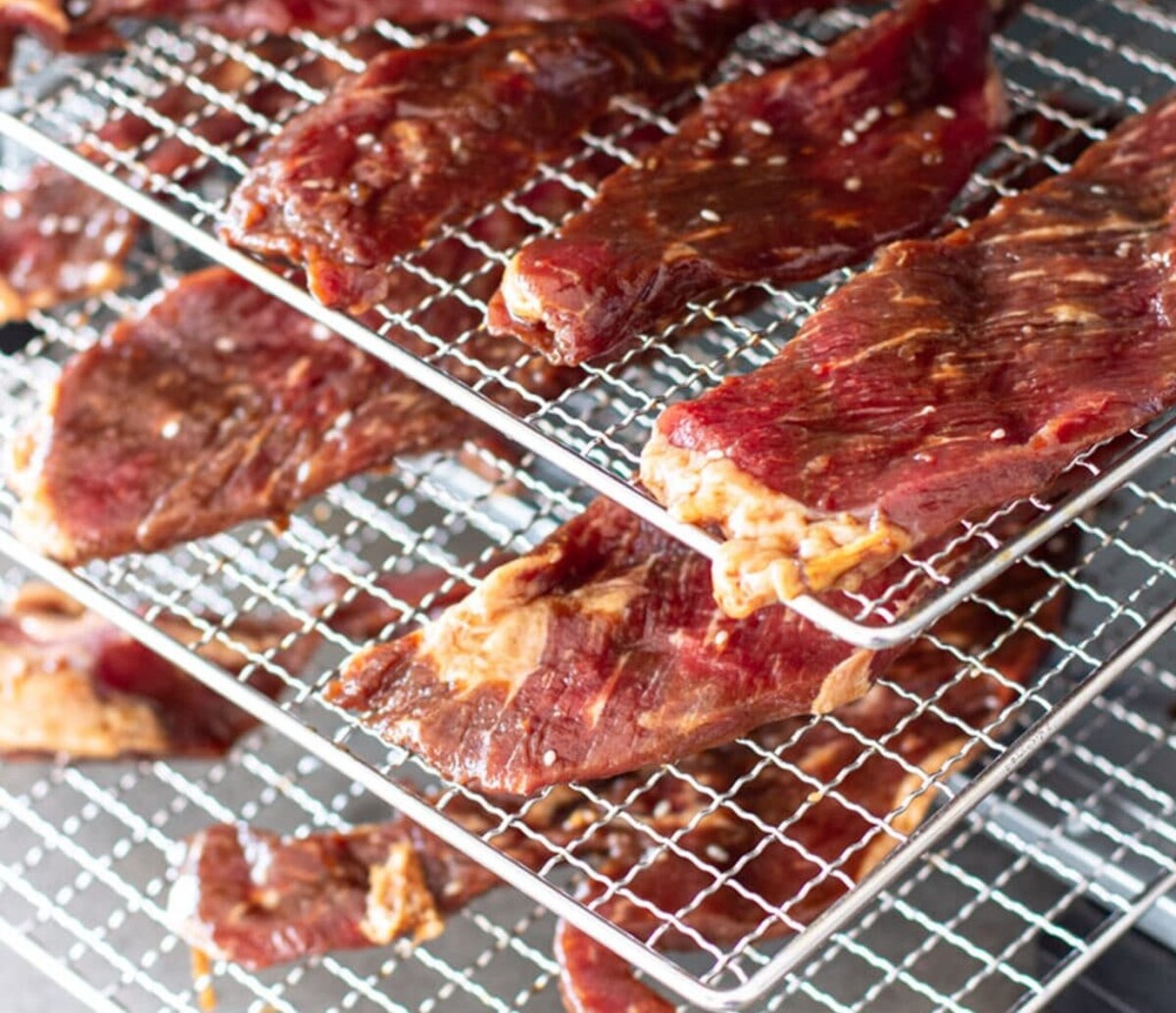
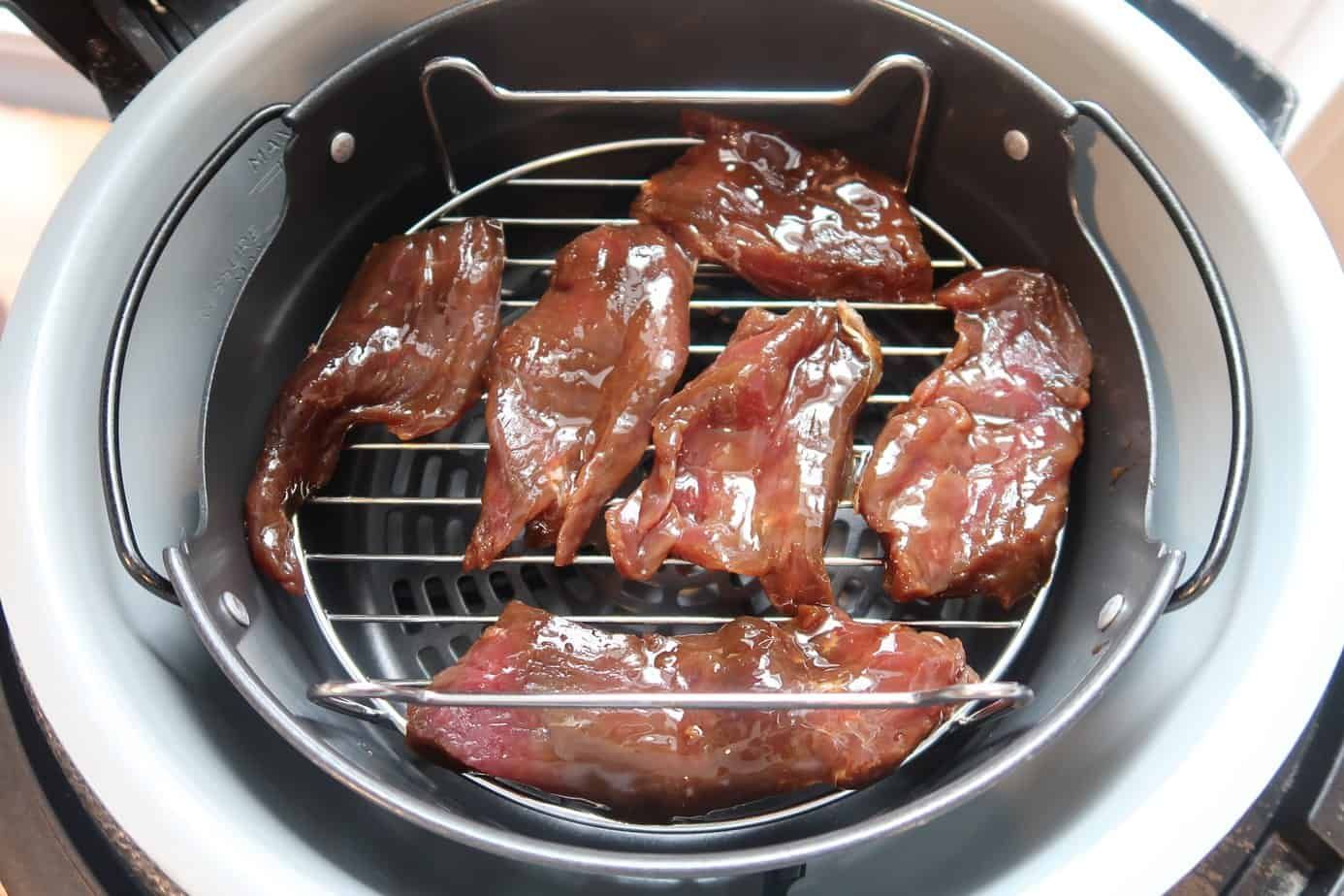
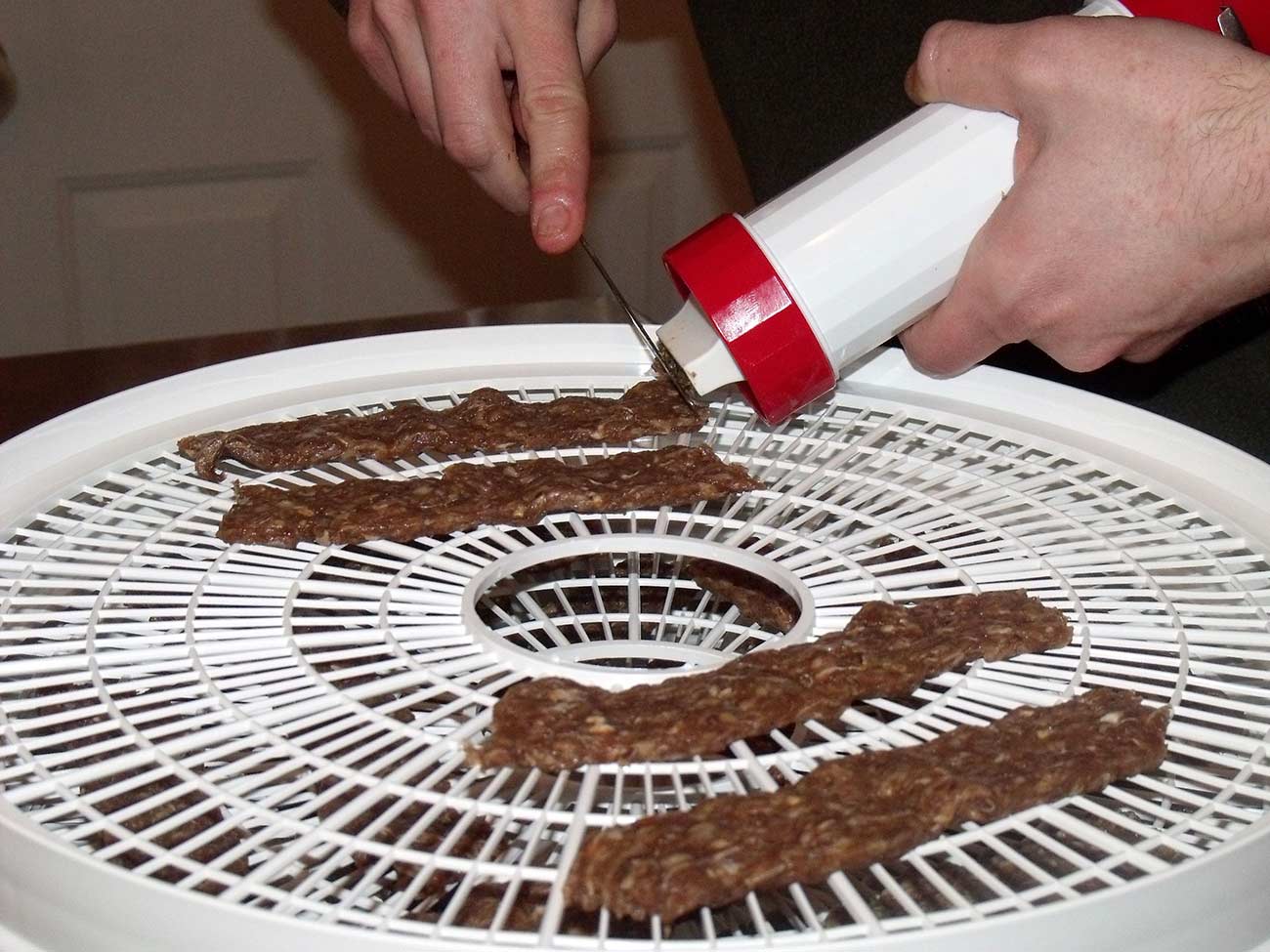
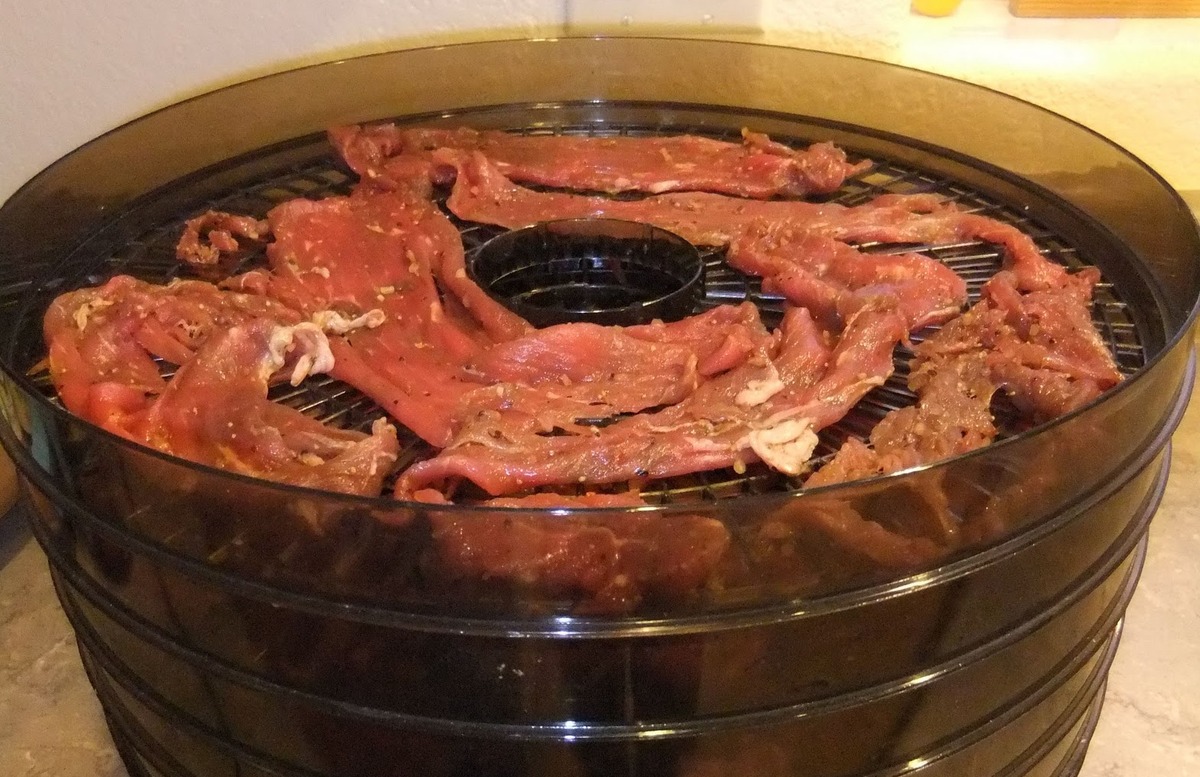
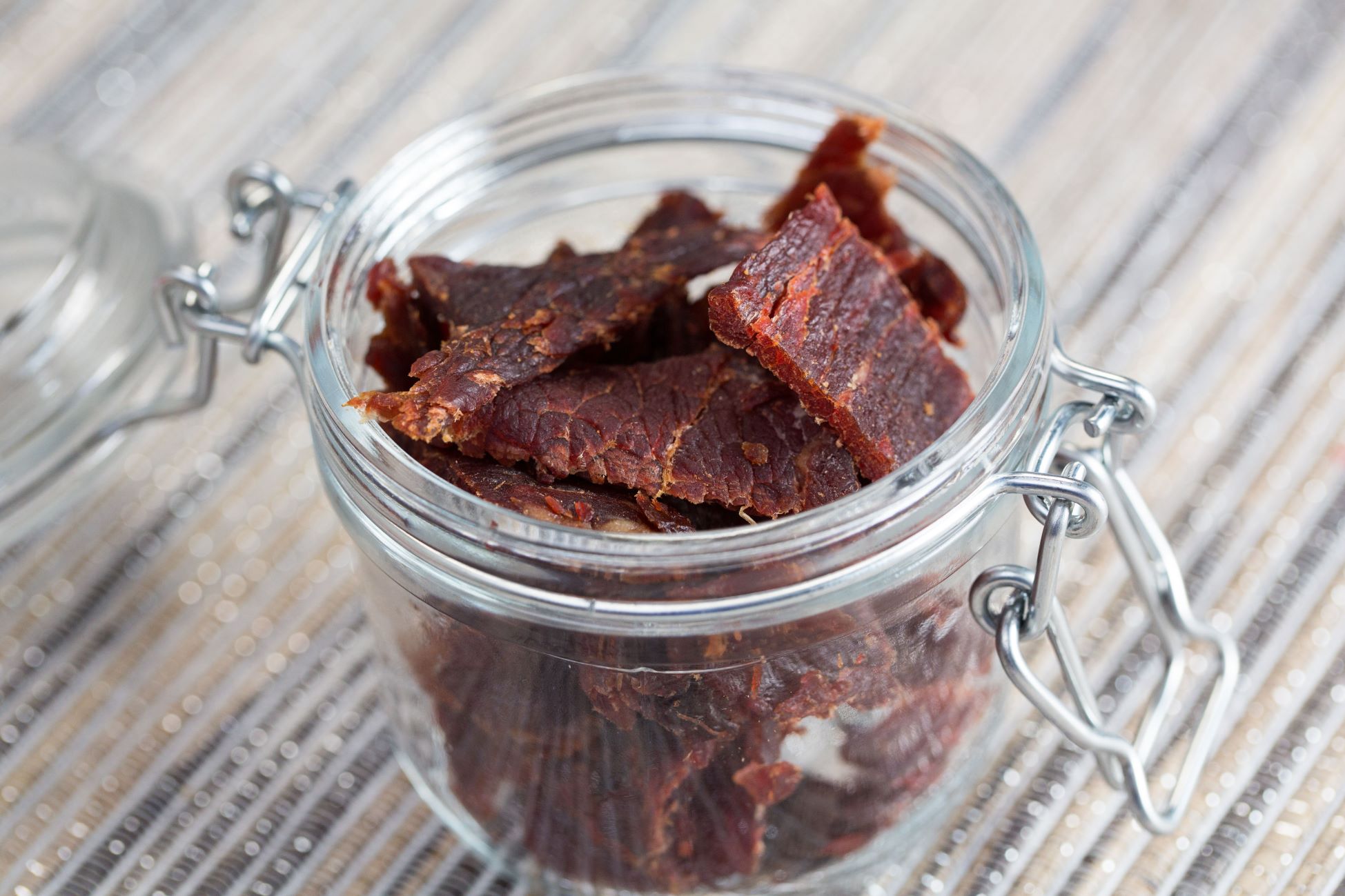
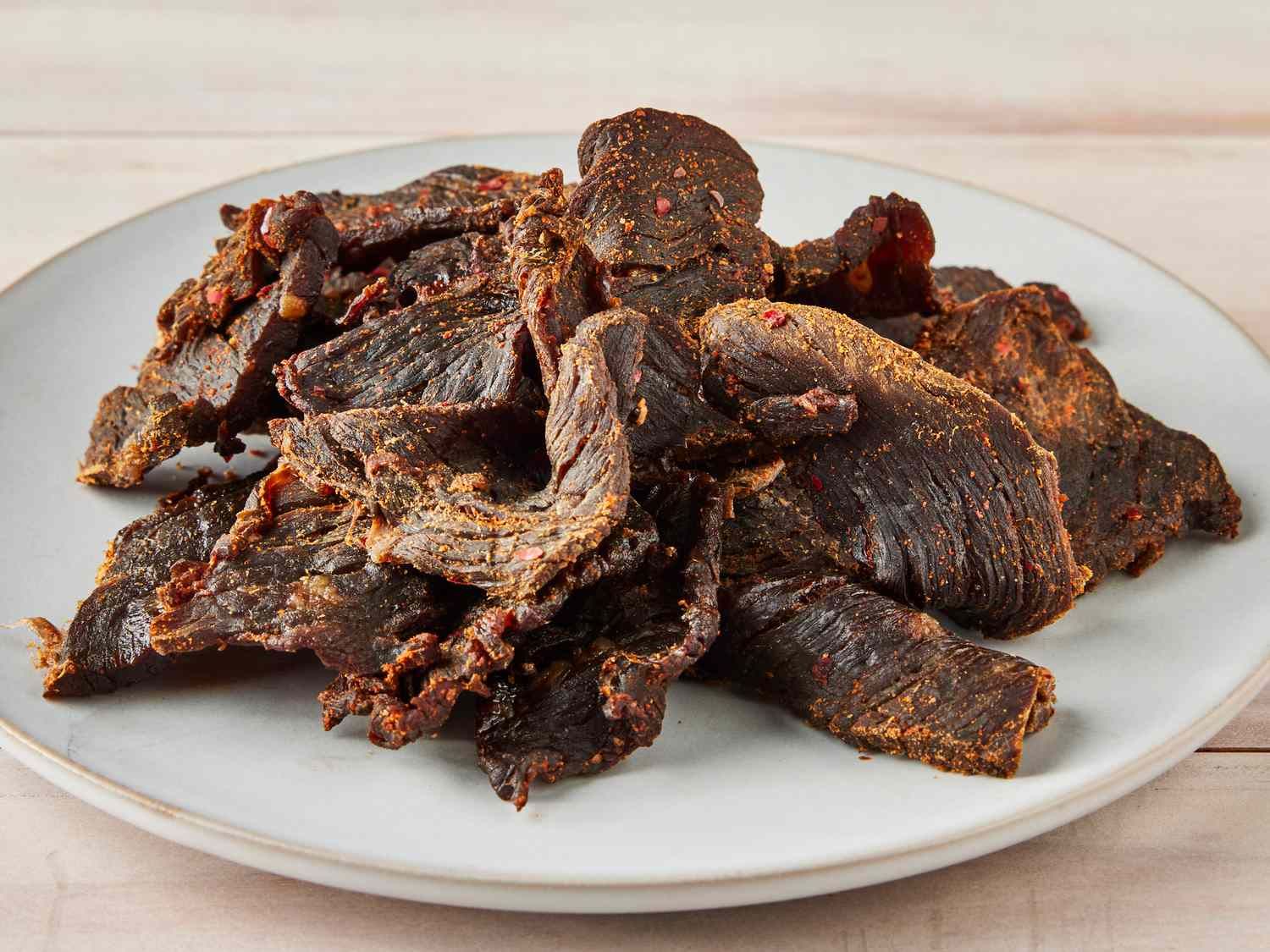
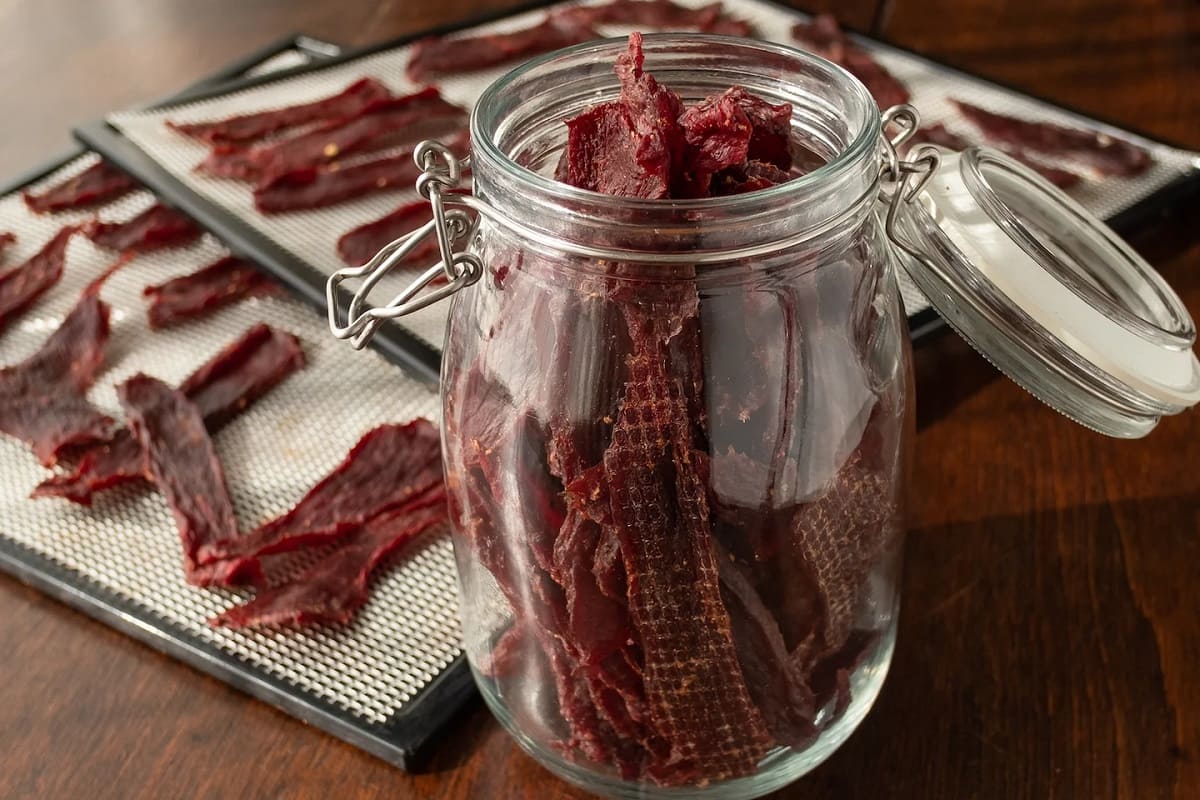

0 thoughts on “How To Store Jerky After Dehydrating”